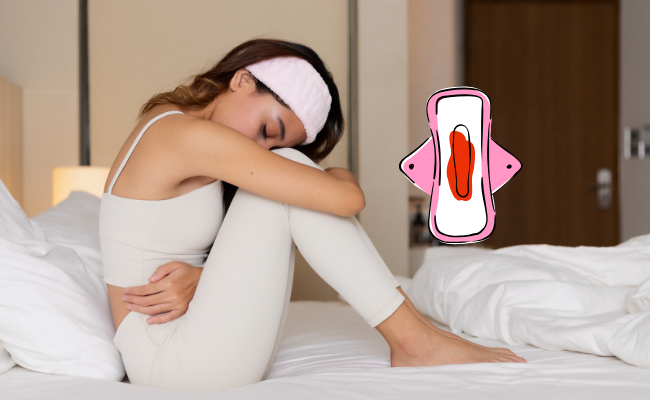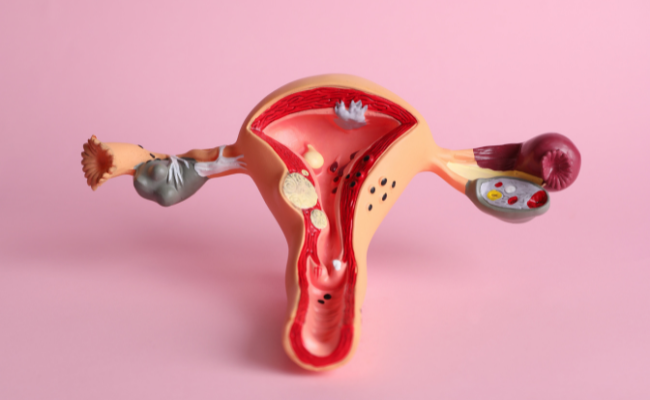How to Treat Ovulation Pain?
- February 01, 2024
- No Comments
What is Ovulation Pain?
Ovulation pain, also known as mittelschmerz, is a prevalent occurrence in the menstrual cycle experienced by many women. It is characterized by mild to moderate abdominal discomfort, typically on one side of the pelvis, coinciding with the release of a mature egg from the ovary. This crucial phase in the menstrual cycle, usually occurring around day 14 of a 28-day cycle, involves the egg's journey down the fallopian tube towards the uterus. Ovulation pain is a distinct symptom arising from this natural process, contributing to the overall spectrum of sensations during this reproductive phase.
Why Does Ovulation Pain Occur?
The precise mechanisms triggering ovulation pain are not fully elucidated, but several factors are believed to contribute to this phenomenon. One key aspect is the physical changes in the ovary itself. As the egg matures, the ovarian wall stretches, and the imminent release of the egg can cause irritation to the surrounding abdominal lining. Additionally, the surge in luteinizing hormone (LH) just before ovulation plays a pivotal role in this process.
The body's response to the release of the egg involves a combination of hormonal fluctuations and physical adjustments. These changes can lead to sensations of discomfort, ranging from a dull ache to sharp, stabbing pains. The cyclic nature of ovulation pain often makes it more noticeable, occurring around the midpoint of the menstrual cycle, typically between days 11 and 21 in a 28-day cycle.
How to Identify Ovulation Pain?
Recognizing ovulation pain involves keen awareness of the timing and nature of the discomfort. Women may feel the pain on one side of the lower abdomen, and it may alternate between the left and right sides in different cycles. The pain can last from a few minutes to a couple of days, and its intensity varies from woman to woman.
A distinguishing feature of ovulation pain is its correlation with the menstrual cycle. Monitoring the menstrual calendar and noting the mid-cycle discomfort can aid in identifying the pattern. The pain is often described as a twinge, cramp, or pressure, and some women may even feel a sensation similar to bloating. While ovulation pain is generally considered normal, persistent or severe pain should be evaluated by a healthcare professional to rule out any underlying issues.
Treatment Solutions for Ovulation Pain:
- Over-the-Counter Pain Relievers: Nonsteroidal anti-inflammatory drugs (NSAIDs) such as ibuprofen or naproxen can be effective in mitigating ovulation pain. These medications help reduce inflammation and alleviate discomfort by blocking the production of certain chemicals in the body.
- Heat Therapy: Applying heat to the lower abdominal area is a simple yet effective way to relieve ovulation pain. A hot water bottle, warm compress, or a relaxing bath can help relax the muscles and ease tension, providing welcome relief.
- Hydration: Adequate hydration is crucial for overall health and may contribute to minimizing ovulation pain. Proper fluid intake supports the body's natural processes and can alleviate some of the discomfort associated with hormonal changes.
- Regular Exercise: Engaging in regular physical activity has been linked to a reduction in menstrual symptoms, including ovulation pain. Exercise stimulates the release of endorphins, the body's natural pain relievers, and promotes overall well-being.
- Relaxation Techniques: Stress can exacerbate menstrual symptoms, and ovulation pain is no exception. Incorporating relaxation techniques such as deep breathing, meditation, or yoga into one's routine can help manage stress levels and alleviate discomfort.
- Birth Control Methods: In cases of severe ovulation pain, hormonal birth control methods may be considered. Birth control pills, patches, or hormonal intrauterine devices (IUDs) can regulate the menstrual cycle and reduce the frequency and intensity of ovulation pain.
Benefits of Treating Ovulation Pain:
- Improved Quality of Life: Effectively managing ovulation pain contributes to an enhanced overall quality of life for women. By minimizing discomfort during a critical phase of the menstrual cycle, women can navigate their daily activities more comfortably.
- Enhanced Productivity: Women experiencing milder or less disruptive ovulation pain are better equipped to maintain their productivity in both professional and personal spheres. The reduction in discomfort allows for greater focus and efficiency in daily tasks.
- Better Mental Health: Addressing ovulation pain positively impacts mental health by reducing stress and anxiety associated with anticipating monthly discomfort. A more positive mental state can have cascading effects on emotional well-being and resilience.
- Increased Comfort During Intimacy: For women who experience ovulation pain, the discomfort can extend to intimate moments. Effectively managing ovulation pain contributes to increased comfort and satisfaction in sexual relationships, fostering better overall well-being.
- Prevention of Complications: While ovulation pain is generally a normal part of the menstrual cycle, persistent or severe pain may be indicative of underlying issues such as ovarian cysts or endometriosis. Timely treatment not only alleviates discomfort but also facilitates the early identification and management of potential complications.







.jpg)


Comments (0)
No comments yet